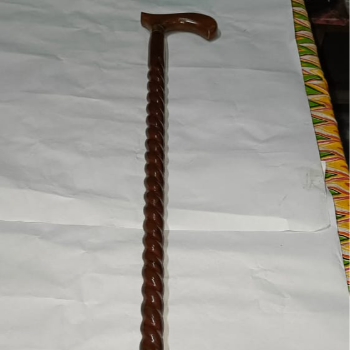In the bustling city of Pune, where tradition meets modernity, lives Mr. Sharma, a retired school teacher with a zest for life. At 68, he enjoys his morning walks in the lush Koregaon Park and cherishes his weekend gatherings with friends for a game of chess at the local club. However, Mr. Sharma has recently been facing difficulties with mobility due to arthritis, a common concern among the elderly. This is where the walking stick steps in, not just as an aid, but as an empowering tool that restores his confidence and independence.
The walking stick isn't just a practical support for Mr. Sharma; it represents a lifestyle choice. Crafted with precision and elegance, it complements his personality and attire, making it a seamless extension of his identity. But more than aesthetics, it addresses a significant problem faced by many elderly individuals in India the struggle to maintain independence and mobility.
The Problem Navigating the Challenges of Aging
As age catches up, many seniors in India face a decline in mobility due to conditions like arthritis, osteoporosis, or simply the wear and tear of time. This can lead to a sense of dependency on family members or caregivers, and sometimes, a feeling of being a burden. The emotional weight of losing one's independence is substantial, often leading to a decline in confidence and social engagement.
For Mr. Sharma, the walking stick is more than a support tool; it's a bridge to his active lifestyle and social interactions. It allows him to continue his cherished routine of morning walks and keeps him engaged in community activities without fear of falling or discomfort.
A Solution The Walking Stick as a Symbol of Empowerment
The walking stick offered by Nobel Handicrafts is designed with the Indian elder in mind. It combines practicality with style, ensuring that it is not just a tool, but a fashion statement. Made from high-quality materials, it is sturdy yet lightweight, offering the perfect balance for those who need a little extra support while maintaining their dignity and style.
The design incorporates traditional Indian craftsmanship, reflecting the rich cultural heritage that Mr. Sharma and many like him hold dear. Its ergonomic handle ensures comfort during prolonged use, while the non-slip base provides stability on various surfaces, be it the paved roads of Pune or the tiled floors of a home.
Reclaiming Independence and Confidence
For Mr. Sharma, the walking stick has become an essential part of his daily life. It empowers him to step out of his home with confidence, knowing that he has reliable support. This newfound independence has rekindled his social life, allowing him to attend family functions, participate in community events, and even plan trips to visit his grandchildren in Mumbai.
Mrs. Latha's Journey to Independence
Take the story of Mrs. Latha, a 72-year-old from Chennai, who found herself increasingly isolated after a fall in her garden. Hesitant to venture out due to fear, she was introduced to the walking stick by her daughter. The stick not only provided physical support but also acted as a catalyst for her to re-engage with her community. Today, Mrs. Latha leads a group of seniors in her neighborhood for weekly nature walks, a testament to the transformative power of this simple yet effective tool.
A Step Towards Freedom
The walking stick may seem like a simple object, but for Mr. Sharma and countless others, it is a lifeline. It represents freedom, style, and dignity, allowing them to live life on their terms. As we navigate the challenges of aging, tools like these help bridge the gap between dependency and independence, ensuring that our elders continue to enjoy the rich tapestry of life with confidence and grace.
In embracing both tradition and innovation, the walking stick stands as a symbol of empowerment for the modern Indian elder, ensuring that they walk not just with support, but with pride.
Visit Vyaparify Site:
https://id.vyaparify.com/nobel-handicraftsLocation:
CCRM+G4R Nagina, Uttar Pradesh 
